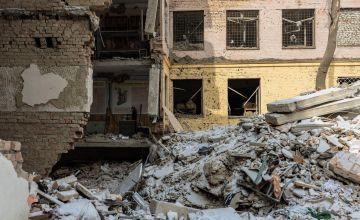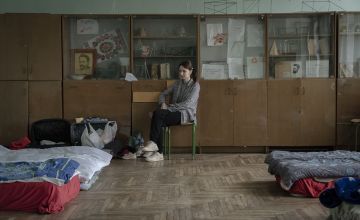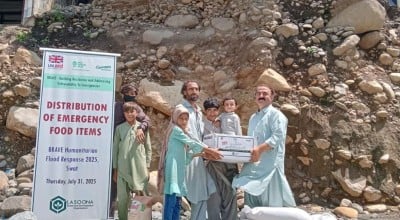
Knowledge Hub
Since the beginning of the conflict in Ukraine on 24 February 2022, millions of lives have been negatively impacted by the crisis. As of the beginning of June, we take a look at how things have changed.
The refugee crisis in Ukraine
The conflict in Ukraine has led to the largest refugee crisis in Europe since World War II. According to the United Nations, more than 12 million people have fled their homes in Ukraine, with over 6 million leaving for neighbouring countries. Plus, over 7.7 million people are internally displaced within the country.
Poland has taken in the majority of refugees, with over 3.2 million fleeing into the country. Romania, Russia, Hungary and Moldova have also taken in significant amounts of displaced people.
Unfortunately, refugees also have to contend with precarious living arrangements as well as significant security risks. Thousands of Ukrainian refugees have been forced to live in overcrowded, unhygienic and unsafe conditions, with some having to live in rodent infested housing, and female refugees being at a higher risk of sexual exploitation.
In Ukraine, in cities like, Kharkiv and Odesa, many people are still sheltering and sleeping in underground subway stations. Some people have been living without water, electricity or heating for weeks. Civilians with chronic diseases like diabetes or cancer staying in these conditions are often unable to get the treatment they need.
Many countries, including the UK, are running several schemes to house refugees and grant them with visas to live and work in the UK for up to three years. We spoke with Sofia* and her son Anton* who fled from Ukraine to Romania. Fleeing the conflict was a difficult emotional decision to make.
Sofia and Anton had to leave family behind, and had to survive on the kindness of fellow Ukrainians as they were fleeing to Romania. Now, they stay with a kind volunteer who has let them stay as long as they need. However, Sofia comes from a very modest financial background and is struggling to find work in Romania.

The conflict has resulted in widespread trauma for the millions of people who have fled the country or who are internally displaced. According to Medical Teams International, ‘stress and anxiety rates are sky high’ for refugees, as well as for front-line staff and volunteers facing the effects of secondary trauma from conducting aid operations inside Ukraine or at the border.
Plus, Ukrainian refugees may have to wait an unacceptably long time , with waiting lists of up to two years, before they can receive specialised therapy to treat trauma stemming from the conflict.
Deaths and atrocities due to the Ukraine crisis
Tragically, the death toll in Ukraine continues to climb. As of 27 May, the United Nations places the official number of total civilian casualties at 8,766, with 4,031 killed and 4,735 injured across the country since the beginning of the invasion.
However, Matilda Bogner, the head of the UN Human Rights Monitoring Mission in Ukraine has admitted that the actual figures are likely higher, with civilian deaths in Ukraine probably being “thousands higher” than the present count.

As the war rages on, mass graves have been discovered. Satellite imagery has revealed a mass grave outside the port city of Mariupol, which could potentially hold up to 9,000 corpses.
There are several documented cases of civilians in Ukraine being subject to war crimes. Human Rights Watch has uncovered incidents of repeated rape, summary executions, violence and intimidation, as well as the looting of civilian property.
How Ukrainian infrastructure is being damaged
So far, according to the Kyiv School of Economics, the total amount of direct damage to infrastructure amounts to over $92 billion USD. The conflict is costing Ukraine $4.5 billion USD a week, as thousands of buildings, roads and other public utilities are destroyed..
Economists argue that damages to civilian infrastructure and the halting of businesses due to the war, may cost the economy $600 billion USD, which is nearly four times Ukraine’s gross domestic product.

Cultural landmarks all over Ukraine have been destroyed, with UNESCO registering at least 120 instances of damage or destruction of cultural sites. Some experts believe that this damage is deliberate and part of a concerted effort to eliminate Ukrainian heritage sites.
This conflict has destroyed Ukraine’s agricultural industry, one of the largest in the world, and precluding Ukraine from feeding itself and the rest of the world, sending global food prices skyrocketing. As we’ve spoke about before, this threatens food security not only in Ukraine, but for millions of people living in vulnerable communities around the world.

Additionally school disruptions due to war and conflict can have adverse effects on learning outcomes and student wellbeing. In Ukraine, unfortunately, this is making itself apparent. Ukrainian children were already reeling from effects of school closure and disruptions due to Covid-19, in which schools were closed for 31 weeks. In addition to the learning losses stemming from the pandemic, the war threatens to cost students months of schooling, which can have disastrous effects on learning outcomes.
Plus, stresses on hospitals from civilian and military causalities are likely to continue to rise, which sadly must be taken in conjunction with the fact that more than 100 attacks on health care facilities in Ukraine have happened so far.
What we’re doing in Ukraine
Initially, we sent over an emergency response team to Krakow, Poland to work with local organisations to treat people fleeing the violence.
As part of our efforts inside Ukraine, Concern are working to help Ukrainians by:
- Delivering essential supplies to internally-displaced families in Ukraine providing food and hygienic supplies who are in collective shelters and rented accomodation
- Facilitating psychosocial treatment for those traumatised by the conflict
- Rehabilitating nine collective centres, by improving plumbing systems, cooking and washing facilities, and sleeping areas






